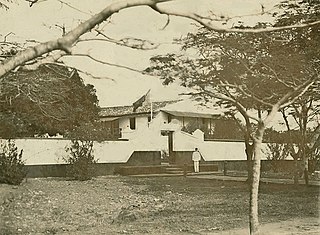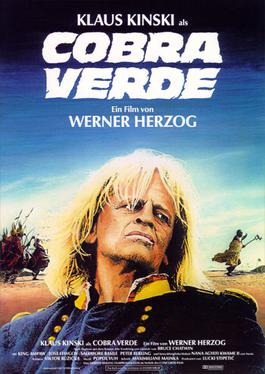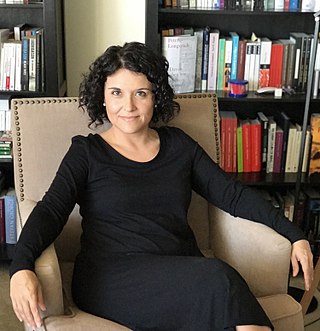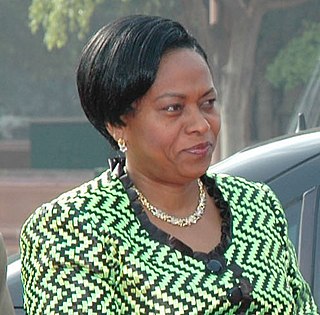Related Research Articles

The Kingdom of Dahomey was a West African kingdom located within present-day Benin that existed from approximately 1600 until 1904. It developed on the Abomey Plateau amongst the Fon people in the early 17th century and became a regional power in the 18th century by expanding south to conquer key cities like Whydah belonging to the Kingdom of Whydah on the Atlantic coast which granted it unhindered access to the tricontinental triangular trade.
Adandozan was a king of the Kingdom of Dahomey, in present-day Benin, from 1797 until 1818. His rule ended with a coup by his brother Ghezo who then erased Adandozan from the official history resulting in high uncertainty about many aspects of his life. Adandozan took over from his father Agonglo in 1797 but was quite young at the time and so there was a regent in charge of the kingdom until 1804. Dealing with the economic depression that had defined the administrations of his father Agonglo and grandfather Kpengla, Adandozan tried to reduce slavery to decrease European trade, and when these failed reform the economy to focus on agriculture. Unfortunately, these efforts did not end domestic dissent and in 1818 at the Annual Customs of Dahomey, Ghezo and Francisco Félix de Sousa, a powerful Brazilian slave trader, organized a coup d'état and replaced Adandozan. He was left alive and lived until the 1860s hidden in the palaces while he was largely erased from official royal history.

Ghezo, also spelled Gezo, was King of Dahomey from 1818 until 1859. Ghezo replaced his brother Adandozan as king through a coup with the assistance of the Brazilian slave trader Francisco Félix de Sousa. He ruled over the kingdom during a tumultuous period, punctuated by the British blockade of the ports of Dahomey in order to stop the Atlantic slave trade.

Ouidah or Whydah, and known locally as Glexwe, formerly the chief port of the Kingdom of Whydah, is a city on the coast of the Republic of Benin. The commune covers an area of 364 km2 (141 sq mi) and as of 2002 had a population of 76,555 people.

Tomé de Sousa (1503–1579) was the first governor-general of the Portuguese colony of Brazil from 1549 until 1553. He was a nobleman and soldier born in Rates, Póvoa de Varzim. Sousa was born a noble and participated in military expeditions in Africa, fought the Moors and commanded the nau Conceição to Portuguese India, part of the armada of Fernão de Andrade.

The Forte de São João Baptista de Ajudá is a small restored fort in Ouidah, Benin. Built in 1721, it was the last of three European forts built in that town to tap the slave trade of the Slave Coast. Following the legal abolition of the slave trade early in the 19th century, the Portuguese fort lay abandoned most of the time until it was permanently reoccupied in 1865.

Cobra Verde is a 1987 German drama film directed by Werner Herzog and starring Klaus Kinski, in their fifth and final collaboration. Based upon Bruce Chatwin's 1980 novel The Viceroy of Ouidah, the film depicts the life of a fictional slave trader who travels to the West African kingdom of Dahomey. It was filmed on location in Ghana, Brazil, and Colombia.

Thomas Boni Yayi is a Beninese banker and politician who was the president of Benin from 2006 to 2016. He took office after winning the March 2006 presidential election and was re-elected to a second term in March 2011. He also served as the chairperson of the African Union from 29 January 2012 to 27 January 2013.

The Viceroy of Ouidah is a novel published in 1980 by Bruce Chatwin, a British author.
The Kingdom of Whydah ( known locally as; Glexwe / Glehoue, but also known and spelt in old literature as; Hueda, Whidah,Ajuda, Ouidah, Whidaw,Juida, and Juda was a kingdom on the coast of West Africa in what is now Benin. It was a major slave trading area which exported more than one million Africans to the United States, the Caribbean and Brazil before closing its trade in the 1860s. In 1700, it had a coastline of around 16 kilometres ; under King Haffon, this was expanded to 64 km, and stretching 40 km inland.

Francisco Félix de Souza was a Brazilian slave trader who was deeply influential in the regional politics of pre-colonial West Africa. He founded Afro-Brazilian communities in areas that are now part of those countries, and went on to become the "chachá" of Ouidah, a title that conferred no official powers but commanded local respect in the Kingdom of Dahomey, where, after being jailed by King Adandozan of Dahomey, he helped Ghezo ascend the throne in a coup d'état. He became chacha to the new king, a curious phrase that has been explained as originating from his saying "(...) já, já.", a Portuguese phrase meaning something will be done right away.

Paul-Émile de Souza was a Beninese army officer and political figure. He was chairman of the Directory of Dahomey from December 13, 1969 to May 7, 1970.

Sousa, Souza, de Sousa, de Souza, Dsouza or D'Souza is a common Portuguese-language surname, especially in Portugal, Brazil, East Timor, India, and Galicia. In Africa, the name is common in former Portuguese colonies, especially among people who have some Portuguese and Brazilian roots in Ghana, Togo, Benin, Nigeria, Angola, São Tomé and Príncipe, Cape Verde, Guinea-Bissau, and Mozambique.
The History of the Kingdom of Dahomey spans 400 years from around 1600 until 1904 with the rise of the Kingdom of Dahomey as a major power on the Atlantic coast of modern-day Benin until French conquest. The kingdom became a major regional power in the 1720s when it conquered the coastal kingdoms of Allada and Whydah. With control over these key coastal cities, Dahomey became a major center in the Atlantic Slave Trade until 1852 when the British imposed a naval blockade to stop the trade. War with the French began in 1892 and the French took over the Kingdom of Dahomey in 1894. The throne was vacated by the French in 1900, but the royal families and key administrative positions of the administration continued to have a large impact in the politics of the French administration and the post-independence Republic of Dahomey, renamed Benin in 1975. Historiography of the kingdom has had a significant impact on work far beyond African history and the history of the kingdom forms the backdrop for a number of novels and plays.
Beninese American are Americans of Beninese descent. According to the census of 2000, in the United States there are only 605 Americans of Beninese origin. However, because since the first half of the eighteenth century to nineteenth many slaves were exported from Benin to the present United States, the number of African Americans with one or more Beninese ancestors could be much higher. The number of slaves from Bight of Benin exported to present United States exceeded 6,000 people, although this might consist not only in Benin, but also washes the shores of Ghana, Togo and Nigeria. It is also important to note that they were slaves from modern Benin, who exchanged voodoo practices with Francophone African descendants in Louisiana. Currently, there are Beninese communities in cities such as Chicago or Washington, D.C., Philadelphia and in other states as New York. As of 2021, there were over 500 Beninese immigrants in the town of Austin, Minnesota.

Ana Lucia Araujo is an American historian, art historian, author, and professor of history at Howard University. She is a member of the International Scientific Committee of the UNESCO Slave Route Project. Her scholarship focuses on the transnational history, public memory, visual culture, and heritage of slavery and the Atlantic slave trade.

The Atlantic slave trade to Brazil occurred during the period of history in which there was a forced migration of Africans to Brazil for the purpose of slavery. It lasted from the mid-sixteenth century until the mid-nineteenth century. During the trade, more than three million Africans were transported across the Atlantic and sold into slavery. It was divided into four phases: The Cycle of Guinea ; the Cycle of Angola which trafficked people from Bakongo, Mbundu, Benguela and Ovambo; Cycle of Costa da Mina, now renamed Cycle of Benin and Dahomey, which trafficked people from Yoruba, Ewe, Minas, Hausa, Nupe and Borno; and the Illegal trafficking period, which was suppressed by the United Kingdom (1815-1851). During this period, to escape the supervision of British ships enforcing an anti-slavery blockade, Brazilian slave traders began to seek alternative routes to the routes of the West African coast, turning to Mozambique.

Chantal de Souza Yayi is a Beninese politician and former First Lady of Benin from 2006 until 2016. She is the wife of former Beninese President Thomas Boni Yayi.
Moise de Souza is a Beninese construction engineer. He currently serves as Chacha IX, the patriarch of the aristocratic De Souza family of Ouidah.
Martine de Souza is a Beninese tour guide. She is a member of the De Souza family.
References
- ↑ "An African Country Reckons With Its History Of Selling Slaves". washingtonpost.com. Retrieved January 2, 2023.
- ↑ "An African Country Reckons With Its History Of Selling Slaves". washingtonpost.com. Retrieved January 2, 2023.
- ↑ "The de Souza family". acervoaguda.com. Retrieved January 2, 2023.
- ↑ "The de Souza family". acervoaguda.com. Retrieved January 2, 2023.
- ↑ "An African Country Reckons With Its History Of Selling Slaves". washingtonpost.com. Retrieved January 2, 2023.
- ↑ Ana Lucia Araujo, "Forgetting and Remembering the Atlantic Slave Trade: The Legacy of Brazilian Slave Merchant Francisco Félix de Souza," Crossing Memories: Slavery and African Diaspora, ed. Ana Lucia Araujo, Mariana P. Candido, Paul E. Lovejoy (Trenton, NJ: Africa World Press, 2011), 79-103.
- ↑ "An African Country Reckons With Its History Of Selling Slaves". washingtonpost.com. Retrieved January 2, 2023.
- ↑ "Wonders of the African World Episode 3: The Slave Kingdoms". pbs.org. Retrieved January 3, 2023.